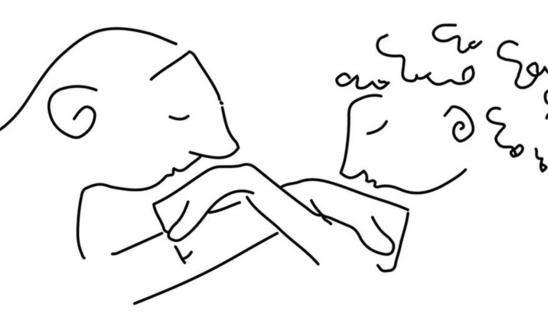What nearly all languages have in common–whether you speak or sign

If you hear someone say “John and Mary kiss,” you’d likely imagine a single symmetrical action. But hear them say “John and Mary kiss each other,” and you may construe an entirely different picture—one in which the parties reciprocate with two separate actions, kissing the other’s hand.
A distinction this subtle might not seem important, yet it appears across nearly all spoken languages.
In fact, this distinction may be intrinsic to the very development of language, according to new research co-authored by Professor Susan Goldin-Meadow. Published May 28 in the Proceedings of the National Academy of Science, the study found that sign language users in Nicaragua also distinguished between the concepts of symmetry and reciprocity—despite having developed their language in isolation.